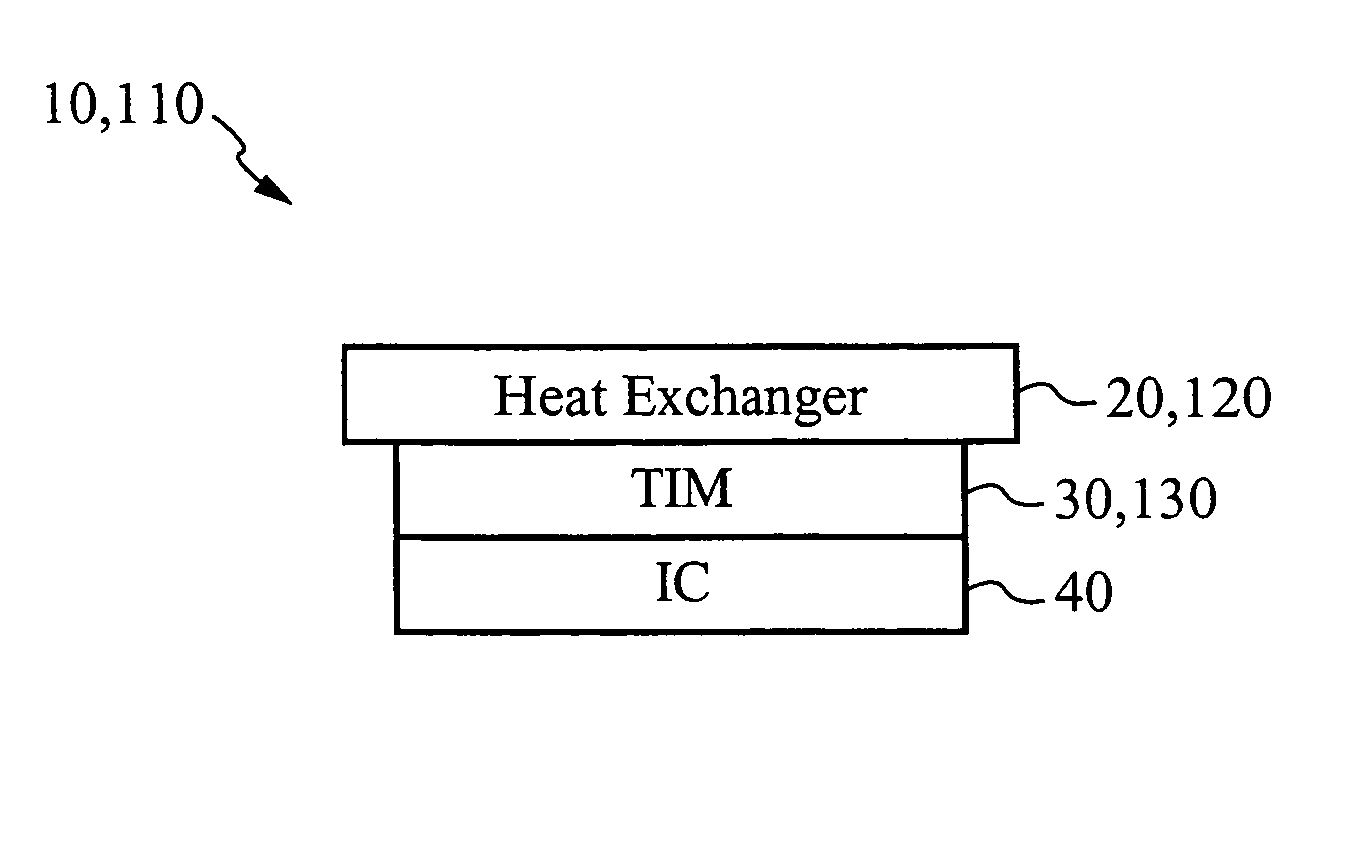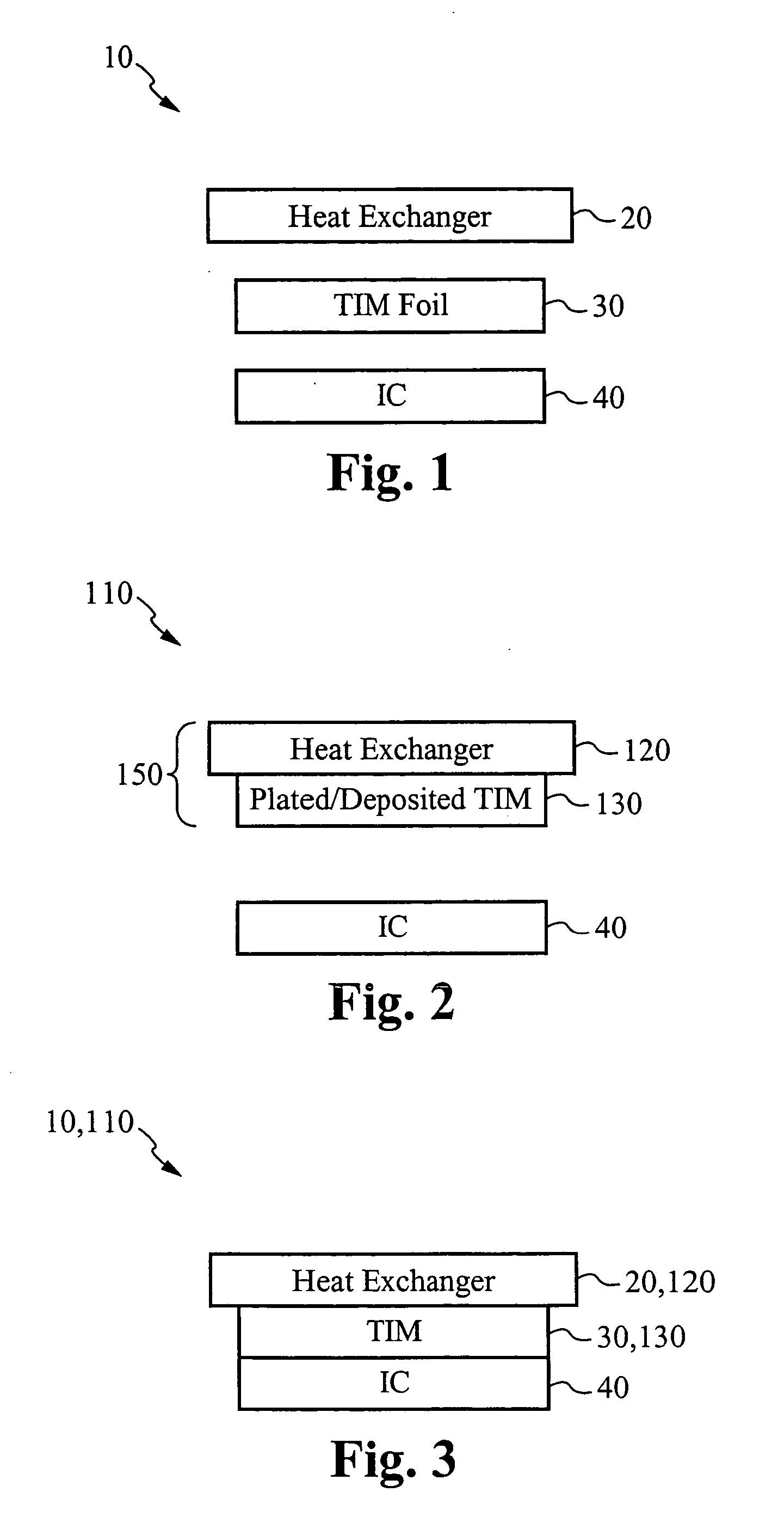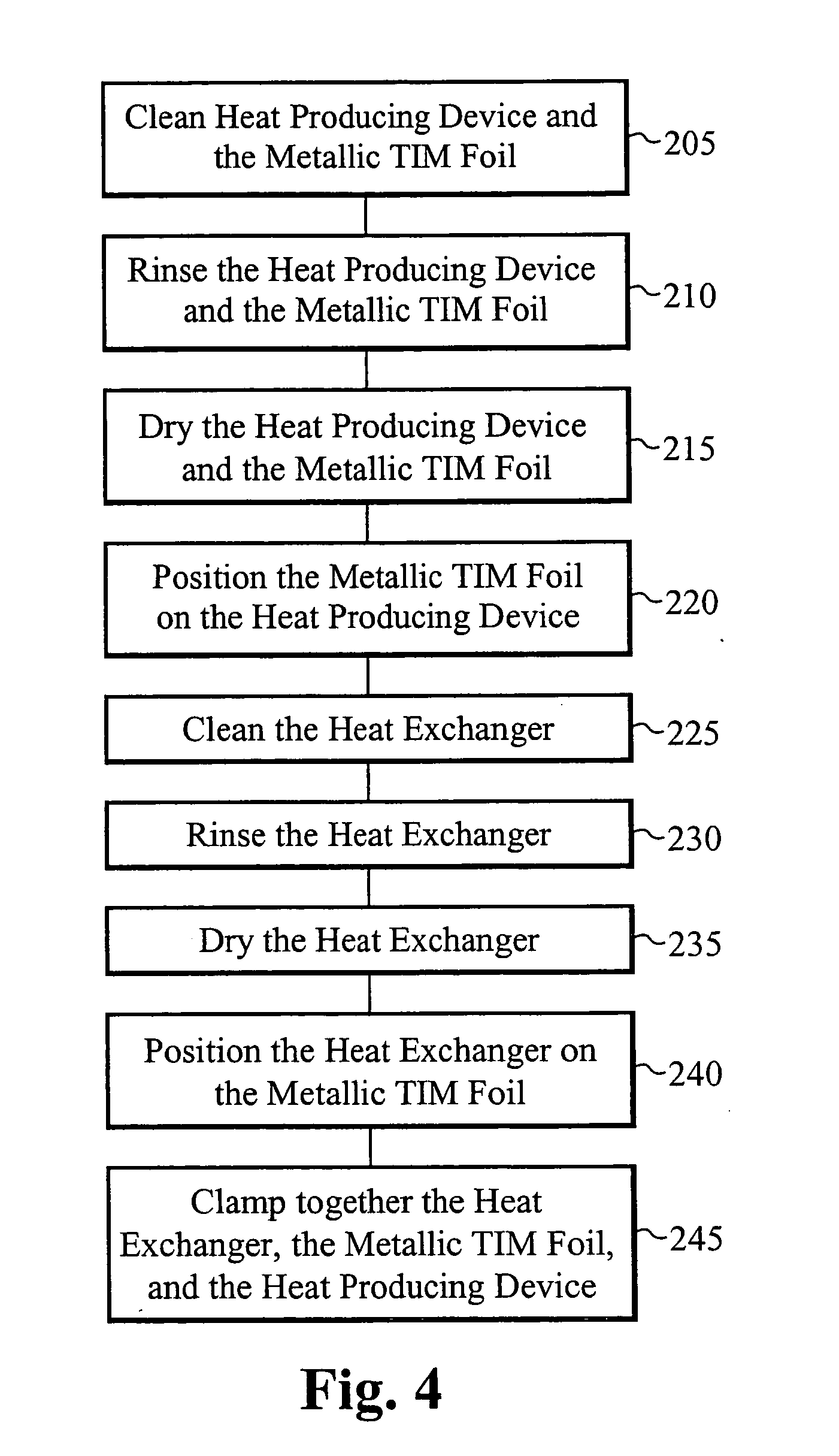Re-workable metallic TIM for efficient heat exchange
a heat exchange and tim technology, applied in the direction of cooling/ventilation/heating modification, semiconductor device details, semiconductor/solid-state device details, etc., can solve the problems of relative low thermal conductivity, integrated circuits require wet surfaces, heat exchangers, etc., to reduce stress transfer and simplify the assembly process
- Summary
- Abstract
- Description
- Claims
- Application Information
AI Technical Summary
Benefits of technology
Problems solved by technology
Method used
Image
Examples
Embodiment Construction
[0017]FIG. 1 illustrates components of a heat exchanging system 10 according to a first embodiment of the present invention. The components are illustrated in FIG. 1 before the heat exchanging system 10 is assembled. The heat exchanging system 10 includes a heat exchanger 20, a metallic TIM foil 30 and a heat source 40. Preferably, the heat source 40 is an integrated circuit, although the heat exchanging system 10 can be used to cool any heat generating device. The integrated circuit 40 is preferably coupled to a printed circuit board (not shown). The metallic TIM foil 30 preferably comprises indium. Indium is a relatively compliant, or soft, material. As such, the metallic TIM foil 30, when pressed into contact with the integrated circuit 40, acts as a cushion. In this manner, stress imparted to the integrated circuit 40 is minimized in at least two different ways. First, stress imparted by the weight of the metallic TIM foil 30 and the heat exchanger 20 onto the integrated circuit...
PUM
 Login to View More
Login to View More Abstract
Description
Claims
Application Information
 Login to View More
Login to View More - R&D
- Intellectual Property
- Life Sciences
- Materials
- Tech Scout
- Unparalleled Data Quality
- Higher Quality Content
- 60% Fewer Hallucinations
Browse by: Latest US Patents, China's latest patents, Technical Efficacy Thesaurus, Application Domain, Technology Topic, Popular Technical Reports.
© 2025 PatSnap. All rights reserved.Legal|Privacy policy|Modern Slavery Act Transparency Statement|Sitemap|About US| Contact US: help@patsnap.com



